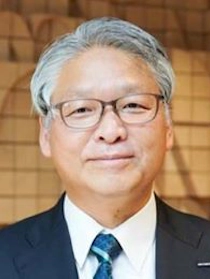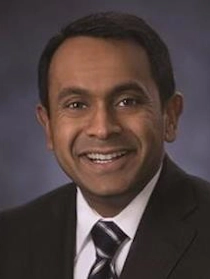The traditional work operating (OS) system that has prevailed for over a century - based on stable, full-time jobs and long-term employment with a single employer - is no longer suited for the digital age. This antiquated model is ill-equipped to address the market forces reshaping how we work: digitalization, automation, and the democratization of labor.
As technology transforms how work gets done, and organizations change to leverage skills-based talent on-demand, the very notion of "jobs" is being dismantled. Leaders must adapt and keep ahead of these changing trends and strategize with new models of work in mind.
As Ravin Jesuthasan highlights in his book ‘Work Without Jobs’, we need a new work operating system that moves beyond the simplistic construct of "jobs" and "jobholders". Mr. Ravin proposes deconstructing jobs into their component parts - tasks, skills, and capabilities - and then reconfiguring these elements in new combinations.
This structure allows us to reinvent work and move beyond the limits of traditional jobs. Companies can then assemble and reassemble these modularized pieces of work in creative new ways that better meet their changing needs.
Forces Shaping the Future of Work
Three powerful forces are converging to reshape the future of work: digitalization, automation, and the democratization of work.
Digitalization and intelligent automation are rapidly transforming how we work. These technologies are eliminating some roles while creating new ones, causing a shift in the global labor market. At the same time, the democratization of work is being accelerated by the gig economy. Our growing ability to decouple work from its traditional confines of space, time, and organizational structure has opened up new flexible talent models.
The acceleration of these forces has compressed 20 years of change into the present decade, and the impacts on management have been profound. We’re seeing hierarchical organizational pyramids flattened. Rather than commanding and controlling through formal authority, managers must now influence, empower, and align people towards a shared mission.
Key Questions to Consider
To remain competitive in the digital age, companies must continue driving efficiency, growth, and return. At the same time, they also need to build organizational resilience, flexibility, and agility.
Adapting to the future of work requires that leaders evolve their approach to work design and talent. They need to move from a static view to a dynamic, portfolio-based mindset.

Key questions leaders should ask themselves are:
- Which capabilities provide automation with a competitive advantage over human talent?
- When should human labor be substituted or augmented with automation?
- What is the value of on-demand gig talent in the work portfolio?
- How can workforce planning become more fluid?
Leaders who adopt this portfolio-based view will be well-positioned to assemble and reassemble work in configurations that meet changing needs. Agile talent models will provide increased flexibility as rigid, annual cycles give way to continuous planning. This fluid work design is essential for companies to remain relevant in the digital age.
Implementing the New Work OS
The new work operating system considers how to reinvent work across six key dimensions:
- Where work gets done.
- When work gets done.
- How work gets assigned and executed.
- What work gets done.
- Who does the work.
- Why people are engaged in their work.

With this model, companies can become more responsive, efficient, equitable and transparent in matching business demand for work with the supply of skills.
Mr. Yamaguchi stated that digital transformation impacts all aspects of work: from work styles to management, communication, learning, and development. Previously, employees worked fixed hours in a central office under hierarchical structures with rigid assignments. However, digital technology has changed this.
Employees now enjoy remote flexibility and less hierarchical structures as managers monitor teams directly via cloud dashboards. Task assignments are more flexible, and data-driven, automated decisions replace subjective individual choices.
Mr. Yamaguchi notes that digital transformation impacts work styles, as well as management, communication, learning, and development. Previously, employees worked fixed hours in a central office, under hierarchical structures with rigid assignments. However, digital technology has changed this. Employees now enjoy remote flexibility. Structures are less hierarchical, and managers monitor teams directly via cloud dashboards. Task assignments are more flexible, and data-driven, automated decisions replace individual experience.

Mr. Ravin said that it’s essential that companies adopt the new Work OS to connect people to work – beyond being confined to specific jobs.
The left side of the diagram below represents what has been done for the past 140 years. The model in the middle is a hybrid structure, where individuals hold jobs but aren't bound by them – while taking on tasks. The model on the far right can be seen as a reinforced form of agility, where work is purely viewed in terms of skills and tasks. These three models are shifting steadily from left to right while coexisting simultaneously.
Ravin said:
What's essential for companies to adopt the new Work OS is connecting people to work beyond being confined to specific jobs.
The left side of the diagram represents what has been done for the past 140 years. The model in the middle is a hybrid structure, where individuals hold jobs but aren't bound by them, and they take on tasks. The model on the far right can be seen as a reinforced form of agility, where work is purely viewed in terms of skills and tasks. These three models are shifting steadily from left to right while coexisting simultaneously.

When asked how specifically organizations should adapt and align to the new Work OS, Mr. Ravin answered that we must change organizations’ design, assembly, and leadership roles. As illustrated in the diagram below, there have been five fundamental shifts in leader behavior and decision-making methods.
In response to Yamaguchi's question, "Specifically, how should organizations adapt to the new Work Operating System?", Ravin answered, "We need to change the organization's design, assembly, and leadership roles to align with the new Work OS. There have been five fundamental shifts in leader behavior and decision-making methods, as illustrated in the diagram."

In our discussion, Mr. Ravin introduced two organizations that are implementing the new Work OS in the most effective manner.
Ravin introduced two organizations that are implementing the new Work Operating System in the most effective manner.
For example, Unilever successfully created a “human network” of on-demand talent by leveraging emerging technologies. This gave them instant access to specialized expertise across the organization, increasing speed and productivity.

Another company that Mr. Ravin has noted, a leading insurer, saw a 600% productivity increase from its data scientists after implementing an open talent pool model. It dynamically connected experts to modular projects based on skills and supercharged performance as a result. The insurer’s success led it to expand this agile pooling approach across other digital roles, including DevOps, UI/UX design, and more.

The Future of Work and Digital Transformation Strategy
Implementing a new Work OS will require fundamental changes in how leaders and managers approach work design and talent management. Business leaders must link organizational strategy with work design and the supply chain of skills and capabilities into an integrated management discipline.
At NTT DATA, we have explored the framework of "Work Re-Invention," envisioning future work powered by digital technology. NTT DATA is enhancing services conducive to realizing this concept and will lead our customers' digital transformations.
Updating legacy management practices to optimize fluid, modular work is a complex undertaking. It requires guidance from experts well-versed in work reinvention. At NTT DATA, we have explored the framework of "Work Re-Invention," envisioning future work powered by digital technology. NTT DATA is creating and enhancing services that will allow organizations to realize this concept, leading our customers' digital transformations.
If you’d like to know how we can help you with your digital transformation ambitions, take a moment to explore the website of your local branch of NTT DATA.


Video
To see my conversation with Mr. Wade, please watch the video below.
Related Links
- Striving for Digital and Physical Excellence
- Expanding the Scope of Data and Digital Ecosystems to Deliver New Value
- Winning The Right Game In The Disruptive Ecosystem
- Digital transformation is not just a project, it is a continuous journey


